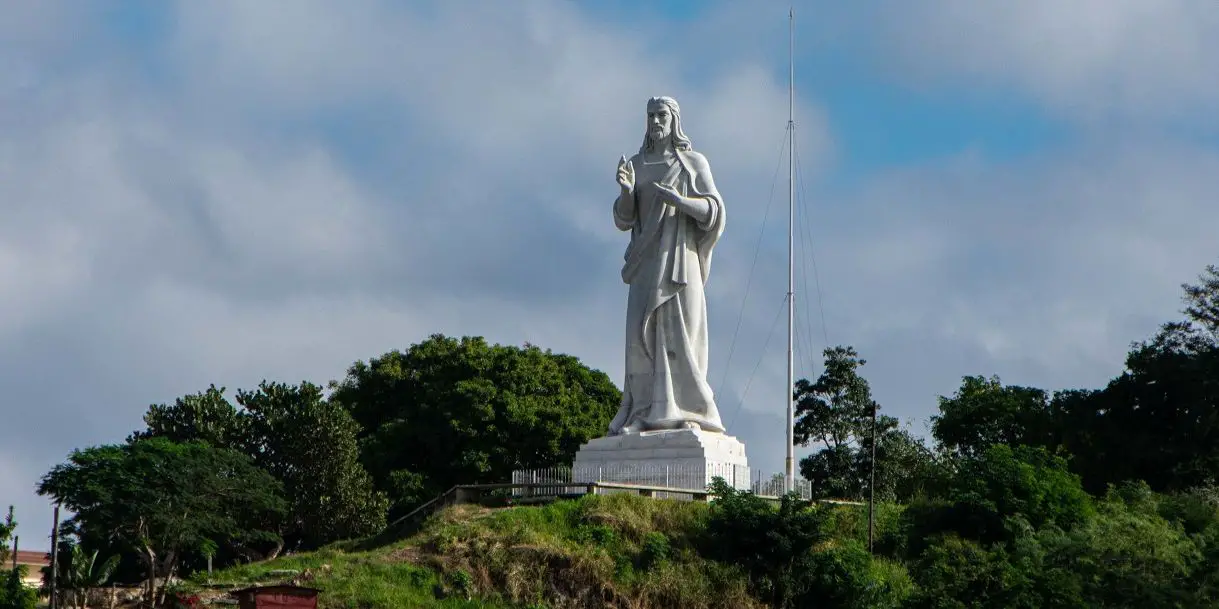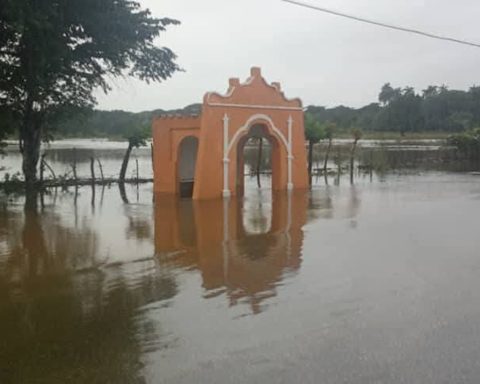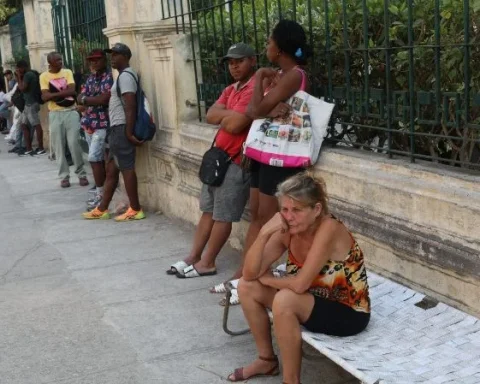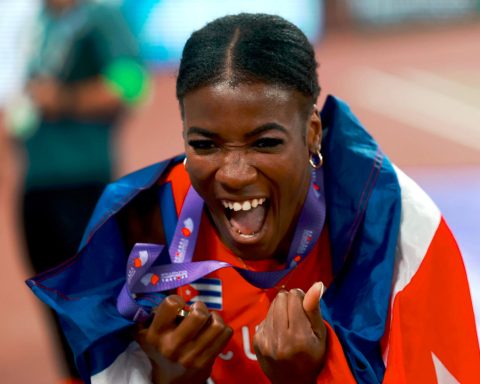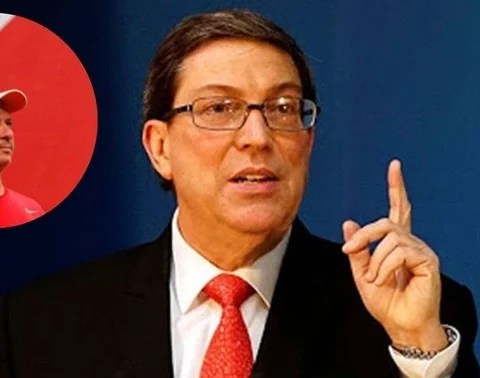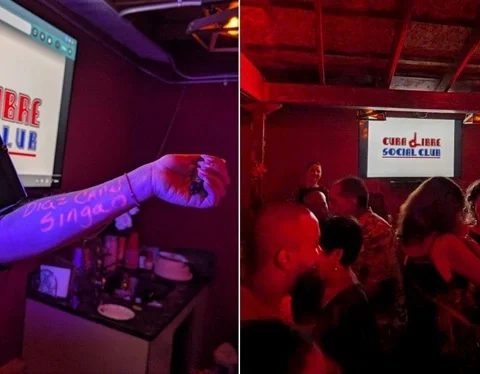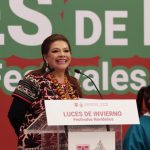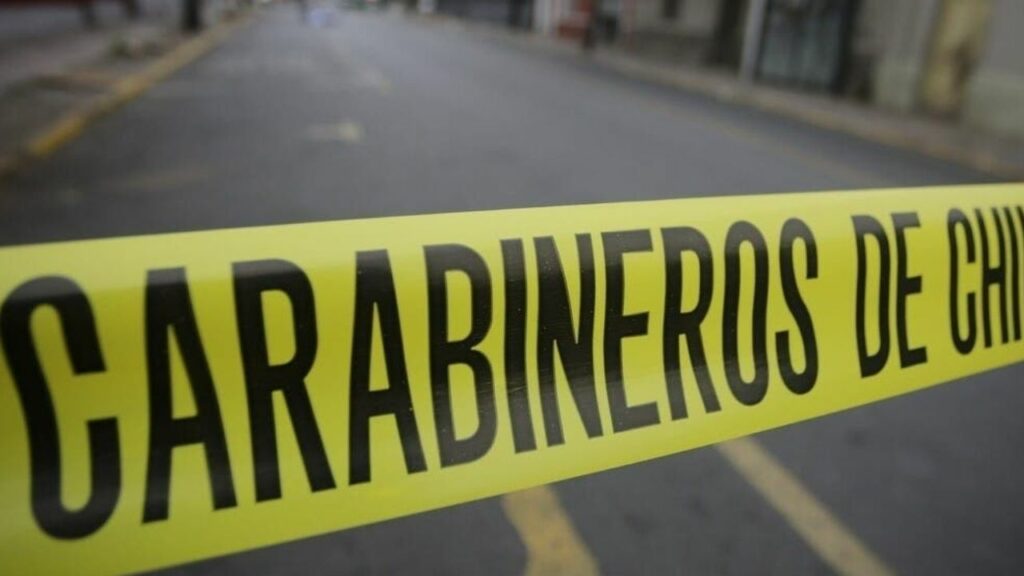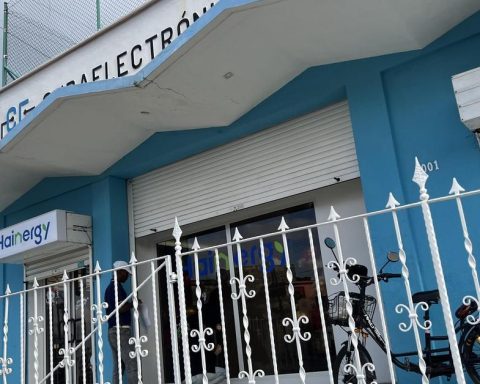Havana Cuba. – Huge statues of Jesus of Nazareth abound throughout the world, almost all built on high elevations to highlight man’s faith in the Son of God. The most iconic of all is in Rio de Janeiro, Brazil. Others, no less famous, are those of Lisbon (Portugal) or Manado (Indonesia). On the Island, as all Cubans know, there is also one.
The Christ the Redeemer of Havana stands on one of the hills of the ultramarine town of Casa Blanca, behind the ancient fortresses of Tres Reyes del Morro and San Carlos de la Cabaña, on the east side of the entrance to the capital’s roadstead. It is a mass of 20 meters high (on a base of three) and approximately 320 tons in weight.
The majestic statue rises 51 meters above sea level, facing the city as if it were watching over the tranquility of the cosmopolitan city. With one arm outstretched and the other over his heart, the Cuban Christ seems to bless everyone in his path.
A promise from the first lady
The Master in History of Cuba, pedagogue and museologist Andrés Pérez San Martín, 79, explained in an interview with CubaNet that it was the political conspiracies of the time that led to the construction of the colossal statue.
“The project was born in 1957, as a result of the assault on the Presidential Palace perpetrated on March 13 of that year with the intention of assassinating Fulgencio Batista and take control of the nation,” says Pérez San Martín.
Back then ―the specialist in history abounds― Marta Fernandez Miranda de Batistathe dictator’s wife, asked God to intercede for the ruler’s life, promising to build an image of Jesus Christ that could be seen from almost all of Havana.
Ultimately, Batista survived, and the first lady set out to make good on her promise. To do this, she called a contest entitled “El Cristo de La Habana”, in which Cuban artists were asked to present their designs for the statue. As an incentive, the winner would receive a substantial prize of 200,000 pesos.
“There was a popular collection to finance that project, which was ultimately delivered to the sculptress. jilma wood”, said Perez San Martin. The winning proposal, made of plaster, showed a corpulent man, with a Creole countenance, with open and empty eyes that gave the impression of looking everywhere.
According to Pérez San Martín, the jury wanted El Cristo in Havana to be higher than the one in Rio de Janeiro. However, the Cuban version was 10 meters below that of the Corcovado hill in Rio de Janeiro, although its bulge and beauty also transcended the world.
The last great work of the Republic
In the structure, 67 pieces of white marble were used, extracted from the quarries of the Apuan Alps in Carrara, Italy, and blessed by Pope Pius XII before being sent to Cuba. Construction began on the statue in September 1957.
With the support of up to 17 workers, it took Jilma Madera more than a year to sculpt and place each one of the parts. The inauguration took place on December 24, 1958, during the Christmas holidays, one day before the so-called Bloody Easter and one week before Batista left the country.
The dictator “had been enthusiastic, but quite possibly he had no other interest than to attract sympathy and wash his political image. It is even said that he had serious disagreements with Cardinal Manuel Arteaga Betancourt, who officiated at the inauguration of El Cristo de La Habana”, recalls Pérez San Martín.
Despite the weather and neglect, the Christ is still standing
The Christ the Redeemer in Havana was the last great public work delivered by the Republic, but its relevance was relegated for being incompatible with the dogmas of the atheist regime established in 1959 by Fidel Castro.
Jilma Madera herself, who dressed in olive green came to the foot of the statue to be photographed with Castro and several of his guerrillas, to frame the greatness of the image years later, would express that “it was able to resist the passage of time and the corrosive neglect of the regime.
In a short time, the statue was trapped by abandonment, apathy towards religion and the negligence of the self-styled revolutionary government, which very soon began to persecute and denigrate believers, trying to replace any manifestation of faith with communist ideology.
Despite having a privileged location, the neglect of the surroundings caused grass and bushes to grow, hindering the visibility of the image from the city. Similarly, for more than 30 years the area was included in military land and, consequently, its access was restricted.
At the same time, the inclement weather also tested the consistency of the divine representation. On three occasions (1961, 1962 and 1986) the sculpture was struck by lightning that caused damage to the structure of its head, until, in the early 1990s, it was finally protected with a lightning rod.
In 1996, when the Island began to open up to tourism, in a certain way it also initiated a relaxation in the regime’s position towards religion. It was then that El Cristo Redentor de La Habana, progressively, returned to receive public and maintenance. Even so, it was not until November 6, 2017 that They declared it a National Monument.
Currently, dozens of people come to meet him every day, some attracted by faith and others moved by the desire to learn about the majestic statue and its history.
